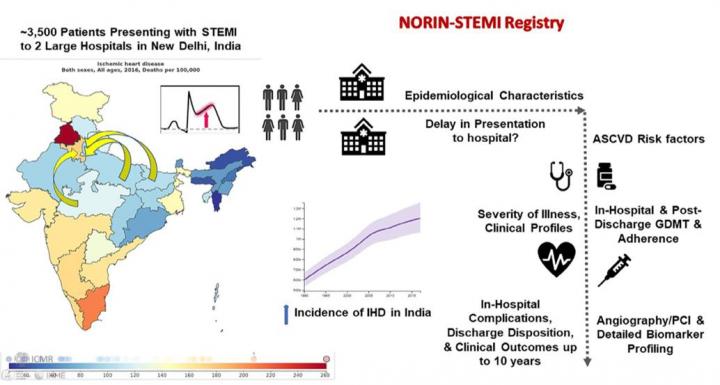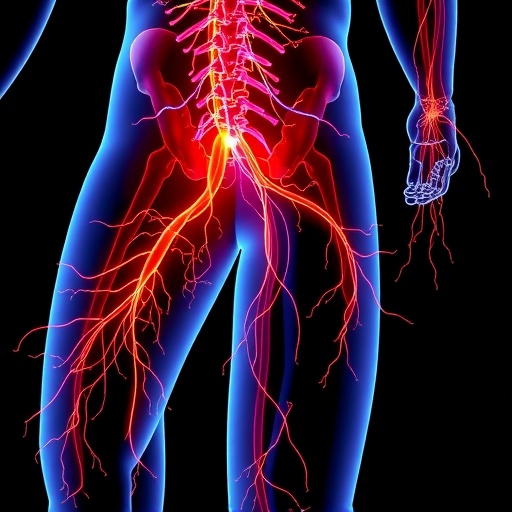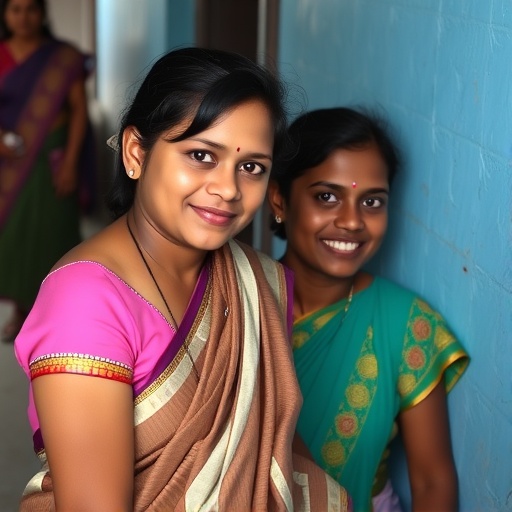This is the first prospective cohort study of this magnitude in the region and is already providing unique data about opportunities to improve STEMI management in India

Credit: UNC School of Medicine
A new study published in Clinical Cardiology introduces the North Indian (NORIN) ST?Segment Elevation Myocardial Infarction (STEMI) Registry and provides preliminary data collected since its start in January of this year. The prospective cohort study’s first author, Sameer Arora, MD, UNC School of Medicine cardiology fellow and preventive medicine resident, says researchers will follow approximately 3,500 patients admitted for STEMI treatment to two government-funded medical centers in New Delhi, India.
These hospitals serve a large proportion of the patients with lower socioeconomic status presenting from multiple states in India, as many centers in these states lack adequate specialized cardiovascular care. The NORIN STEMI registry aims to provide important insights regarding contemporary risk factors profiles, practice patterns, and prognosis in patients with STEMI in an underserved population in North India. These findings may identify opportunities to improve the outcomes of patients with STEMI in the country.
From January through March of this year, 558 patients were registered in the study. Preliminary data from those patients is already providing insight into this population that hasn’t been available previously.
“We have found that only 14 percent of patients being treated for STEMI at these hospitals are women, which is much lower than the average number of women having this kind of heart attack in the United States,” Arora said. “We suspect 14 percent is also lower than the actual average of women having STEMI in North India, but we need to understand why more women aren’t making it to the hospital for treatment.”
Researchers have also found the average age of STEMI patients in this study is nearly ten years younger than the average age of patients in Europe and the U.S. About a third of the patients are less than 50 years old. Arora says this is exactly the kind of information that will provide more insight into population health in that region and help improve treatment for STEMI.
Throughout the course of the study, researchers will follow up with patients several times within one year of their initial treatment for STEMI. The study is currently un-funded.
###
Media Contact
Carleigh Gabryel
[email protected]
919-864-0580
Original Source
http://news.
Related Journal Article
http://dx.




